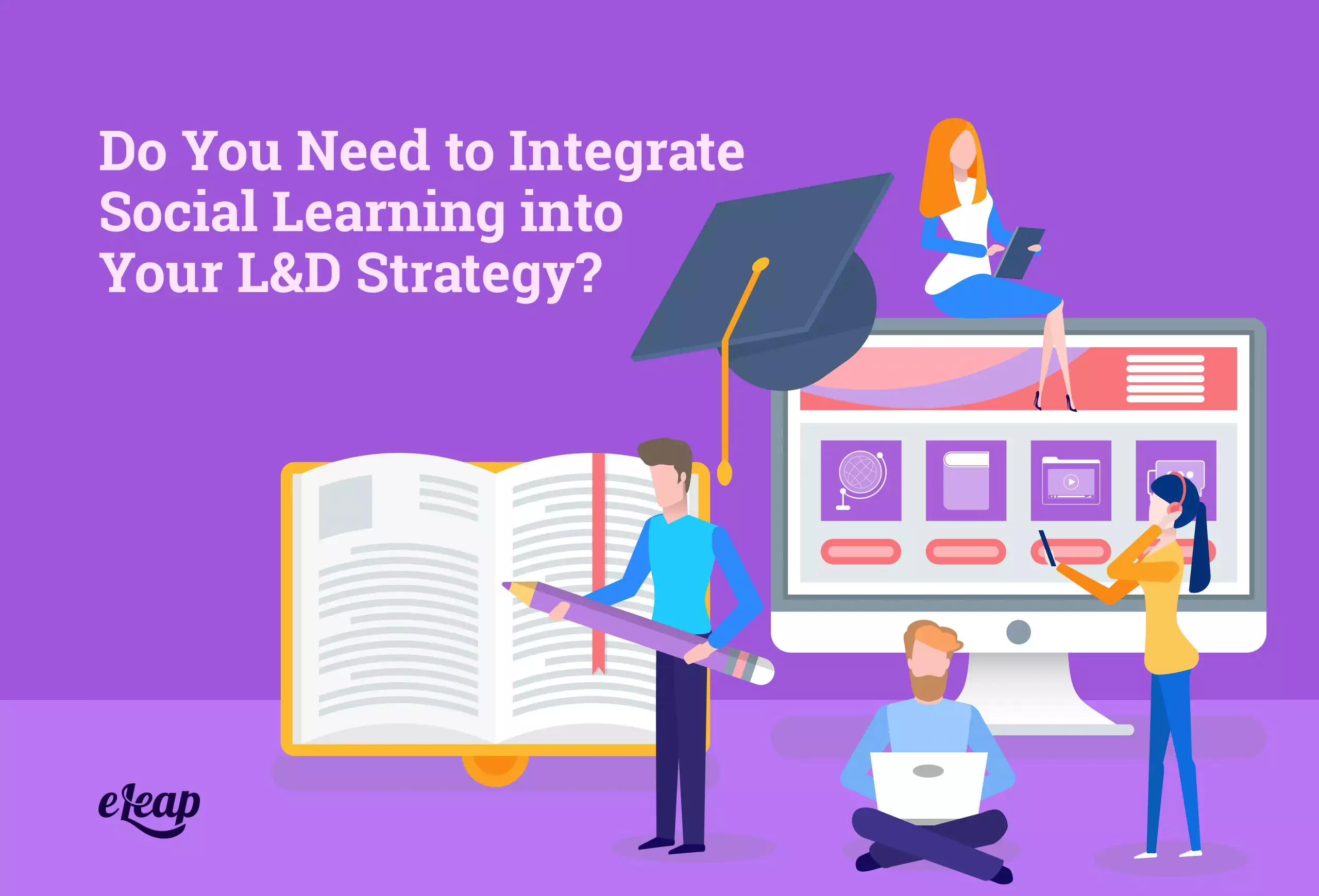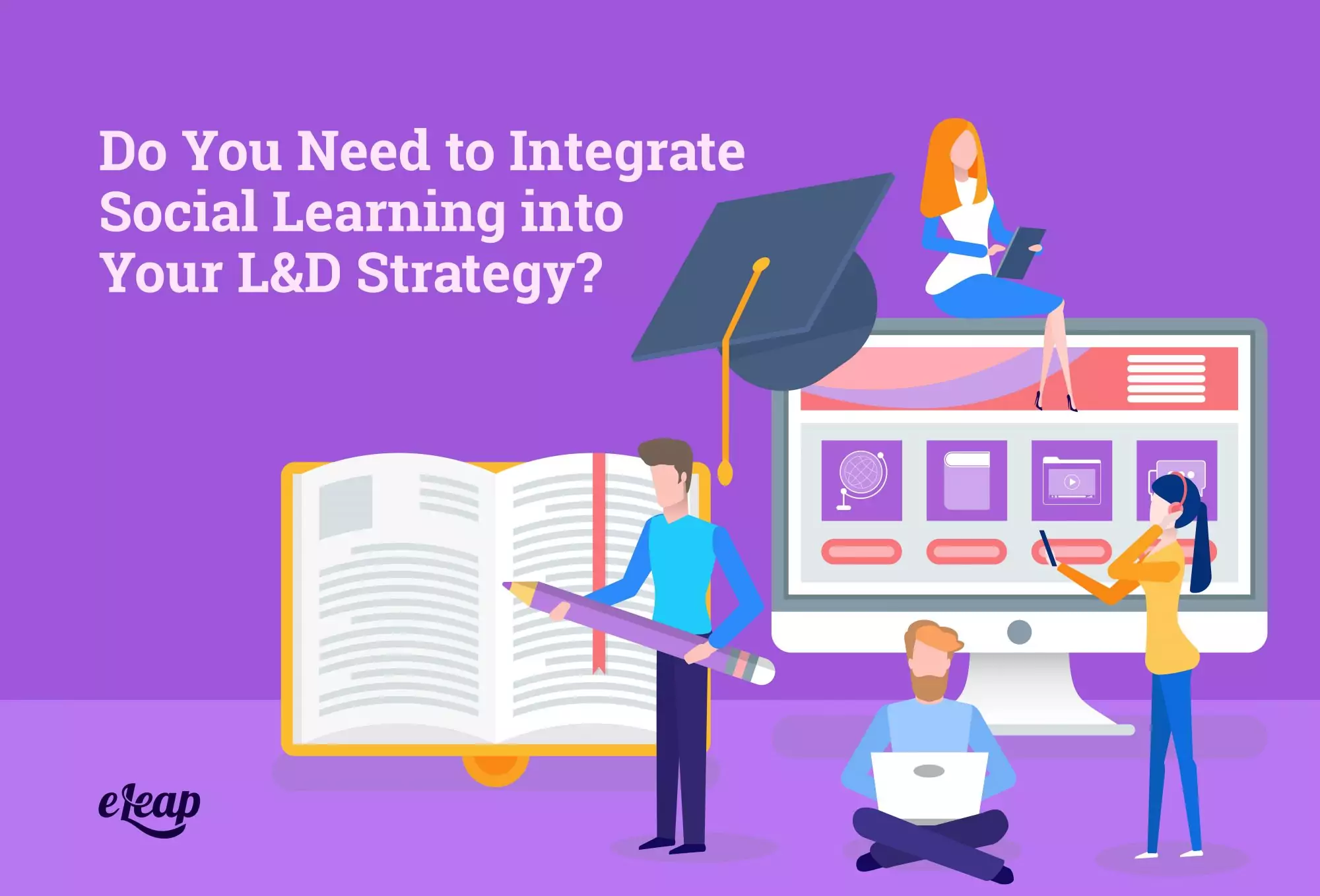Do You Need to Integrate Social Learning into Your L&D Strategy?

Social learning might not get the same attention that other L&D components do, but there are some pretty compelling reasons to make it part of your overall strategy. What is it, though? How does it work, and why should you be concerned with integrating it into your learning and development strategy? While we recommended, you should evaluate your overall learning objectives to make sure social learning integration is in line with your strategic goals.

What Is Social Learning?
To understand the potential role that social learning has for your organization, we will need to start at the beginning. What is social learning? It is actually something that humans are hardwired to do, and we all do it from the very moment we are born.
Social learning is learning with and from other people.
As an infant, we learn from our care providers and others around us. As we grow older, that sphere extends to our friends, teachers, and other people. We are naturally designed to learn socially – we are, after all, social animals.
You do not need to look far to see social learning in action, either. It occurs any time we interact with someone, either directly or indirectly. For instance, when you ask someone to show you how to open a new type of file on your computer, that’s social learning. When you show someone how to use the new copier in the mailroom, that’s social learning.
Social learning can occur:
- In face-to-face situations
- Through interactions on social media
- In discussion threads in user forums
- Via email, chat, or messenger programs
What Is Social Learning Methodology?
The social learning methodology is based on what is called “social learning theory”. Among other points, this theory states that:
- Human learning happens better in a social context. In fact, humans prefer to learn in groups.
- The exchange of knowledge between two people creates a personal learning experience for each learner.
- Learning involves more than simply ingesting incoming information, and can occur through observing behaviors, words, and actions, the consequences of actions, and more.
Why Use Social Learning in Your Organization?
Why should you make use of social learning in your organization’s L&D strategy, though? There are plenty of reasons, including the fact that it is easy to integrate with a modern learning management system, that it can be implemented in a broad range of ways not directly tied to the LMS, and that it delivers improved learner outcomes.
- Everyone learns socially whether they realize it or not.
- Social learning is both cost-effective and learning-effective.
- Social learning helps break down in-house silos.
- Learners make new connections with each other outside of normal teams and departments.
- Social learning can offer a faster transfer of knowledge than other learning methods.
- Social learning is crucial for creating a culture of success and innovation.
How to Implement Social Learning
While it is easy to see the benefits of social learning, it might be a little harder to understand how to implement it within your organization. This is particularly true if your L&D efforts are all “out of the box” – if you rely solely on pre-made courses and modules and have created little or no content on your own. With that being said, it is not all that challenging to embed social elements.
Encourage Interaction and Build a Social Environment
One of the first things you will need to do is encourage interaction between your learners. You can do this within the LMS if it supports social engagement, but your system may not. You can get around that by encouraging your learners to use apps like Zoom or Skype for video chatting and interaction. Other digital tools that might offer benefits include Facebook Messenger, Trello, and Slack. Chat apps can also help with social interaction.
Go beyond starting a conversation between employees, though. Take the time to create digital learning forums. You can create different “boards” each themed after a learning topic, and then give your learners prompts, or just let them discuss things as they like. You will find that a little bit of structure can kick the process off well, though, as many employees may benefit from a little guidance, at least initially.
In addition to encouraging interaction and creating forums, you should also create a sense of competition. When learners compete with one another, they not only learn better, but their engagement levels rise dramatically. Simply put, when people are having fun, they learn better. Their information retention increases, their completion rates rise, and you’ll find that more of your learners will sign up and complete voluntary courses, too.
It is worth noting that gamified content (the elements responsible for creating that sense of competition) don’t need to be in-depth or require a lot of effort to implement. It could be something as simple as adding a leaderboard and showing how everyone stacks up in terms of course completion. Of course, you can also go much more in-depth if you like, and create actual games, give out awards for high performers, and more.
Finally, consider building a question-and-answer feature into your LMS. This allows your learners to pose questions that they need answers to, and have them answered by subject matter experts in your organization (or outside it, if you can create that relationship). Not only does this ensure that learners are receiving accurate answers to their questions, but it speeds learning, boosts information retention, and creates new relationships between the people in your organization.
It’s Time to Get Social!
Ultimately, social learning is something that every business should consider. It offers many critical benefits, including increased learner engagement, with minimal costs of implementation. You can also easily customize it to your organization’s needs and goals, and it can be integrated with a modern LMS – in fact, eLeaP comes with social learning and gamification capabilities baked right in from the beginning.
In the end, humans are social creatures, and we are hardwired to learn from one another. Social learning is the norm – not the exception. Contact us to learn more about how eLeaP can support improved learner outcomes and how social learning works within our LMS.